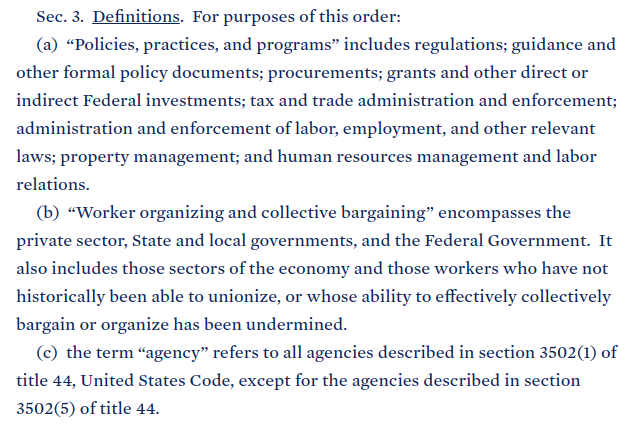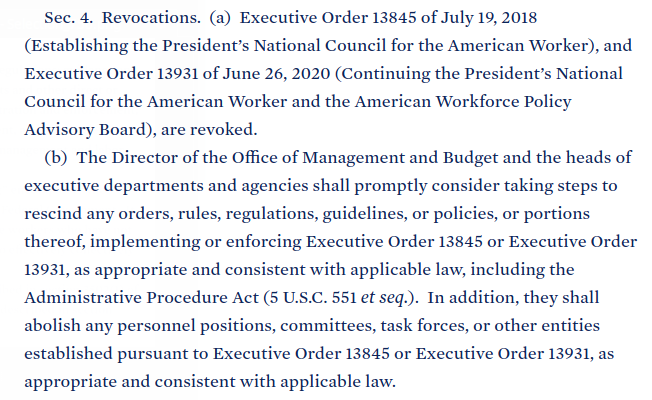
It’s Tuesday.
This Tuesday marks President Biden’s 97th day in office.
For day 97–President will receive his daily brief. This afternoon he will deliver remarks regarding the Biden Administration’s coronavirus response.
When last we met on Monday President Biden had tweeted 1 time. He concluded his Monday by adding another 5 tweets giving him a Monday total of 6 tweets and 0 retweets.
2:19 p.m. D.C., time he says he spoke with India’s Prime Minister Narendra Modi.
Prime Minster Modi said via Twitter that during the call he thanked President Biden “for the support being provided by the United States to India,” adding that his discussion with President Biden also “underscored the importance of smooth and efficient supply chains of vaccine raw materials and medicines. India-US healthcare partnership can address the global challenge of COVID-19.”
The White House published the following readout of the call:
President Joseph R. Biden, Jr. spoke today with Prime Minister Narendra Modi of India, committing that the United States and India will work closely together in the fight against COVID-19. The President pledged America’s steadfast support for the people of India who have been impacted by the recent surge in COVID-19 cases. In response, the United States is providing a range of emergency assistance, including oxygen-related supplies, vaccine materials, and therapeutics. Prime Minister Modi expressed appreciation for the strong cooperation between both countries. The two leaders resolved that the United States and India will continue to stand shoulder-to-shoulder in the effort to protect our citizens and the health of our communities.
White House.gov. 04/26/2021.
3:00 p.m. D.C., time he says that a new program was launching funded by the “American Rescue Plan to provide nutrition assistance to more than 30 million children over the summer.”
On Monday the USDA announced a “new effort funded by the American Rescue Plan to provide adequate nutrition to more than 30 million children over the summer by expanding Pandemic Electronic Benefit Transfer (P-EBT) benefits. Summer months are difficult for low-income children because they lack access to school meals that fill a nutrition gap during the school year.”
The P-EBT program was started last March to provide “food dollars to families to make up for meals missed when schools have closed due to COVID-19.”
The program was set to expire in September 2021, but “through the American Rescue Plan Act, benefits are now available for the duration of the pandemic, including during the summer months.”
White House Press Secretary Jen Psaki announced the already announced program during Monday’s daily press briefing.
Jen Psaki (13:19): Today, the U.S. Department of Agriculture and Secretary Vilsack announced the historic expansion of the Summer Pandemic EBT program. This is the single-largest summer child nutrition effort in our nation’s history and will reach more than 30 million kids this summer thanks to the American Rescue Plan. Summer feeding programs are considered a lifeline for some families, but until now, they’ve reached less than 20 percent of families served during the school year. Children are eligible for this program if they’re eligible to receive free or reduced-price meals during the school year or if they are under age six and live in a SNAP household. That is about 34 million American children. Parents or guardians do not need to take any action to receive the cards in the mail from their state agencies; each child will receive a $375 credit loaded onto an EBT card and can then — that they can — that can then be used by parents or guardians to purchase food.
3:20 p.m. D.C., time he shares an image of himself signing an Executive Order that establishes the White House Task Force on Worker Organizing and Empowerment.
The White House published the following fact-sheet regarding the establishment of the White House Task Force on Worker Organizing and Empowerment.
Snips from the fact-sheet:
Today, President Biden will sign an Executive Order establishing the White House Task Force on Worker Organizing and Empowerment. The Task Force will be dedicated to mobilizing the federal government’s policies, programs, and practices to empower workers to organize and successfully bargain with their employers. Chaired by Vice-President Kamala Harris and Vice-Chaired by Secretary Marty Walsh, the Task Force will include more than twenty cabinet members and heads of other federal agencies who will take a whole-of-government approach to empower workers.
Since 1935, when the National Labor Relations Act was enacted, the policy of the federal government has been to encourage worker organizing and collective bargaining, not to merely allow or tolerate them. In the 86 years since the Act was passed, the federal government has never fully implemented this policy. While some administrations have taken selected actions to strengthen workers’ rights, no previous administration has taken a comprehensive approach to determining how the executive branch can advance worker organizing and collective bargaining.
That is why, today, the President is establishing the White House Task Force on Worker Organizing and Empowerment (“Task Force”). The mission of the Task Force will be to mobilize the federal government’s policies, programs, and practices to empower workers to organize and successfully bargain with their employers. This mission includes looking for ways to increase worker power in areas of the country with restrictive labor laws, for marginalized workers including women and people of color, and for workers in industries that are difficult to organize and lack labor protections.
The President’s Executive Order directs the Task Force to make a set of recommendations within 180 days addressing two key issues. First, how can existing policies, programs, and practices be used to promote worker organizing and collective bargaining in the federal government? And second, where are new policies needed to achieve the Task Force’s mission and what are the associated regulatory and statutory changes needed?
Vice President Kamala Harris will serve as the Task Force’s Chair and Secretary of Labor Marty Walsh will serve as the Vice-Chair. The Task Force will be comprised of more than twenty cabinet members and heads of other federal agencies that have powerful levers to help the Task Force carry out its mission. The Task Force will engage with a diverse set of leaders in the labor movement, academia, advocacy groups, and beyond to seek ideas for potential federal action and feedback on initiatives under consideration.
White House.gov. 04/26/2021.
The Task Force has four goals:
- Lead by example by ensuring that the federal government is a model employer with respect to encouraging worker organizing and collective bargaining among its workforce.
- Facilitate worker organizing across the country by taking an all-of-government approach to mobilize the federal government’s policies, programs, and practices to provide workers the opportunity to organize and bargain collectively.
- Increase worker power in underserved communities by examining and seeking to address the particular challenges to worker organizing in jurisdictions with restrictive labor laws; the added challenges that marginalized workers in many communities encounter, including women and people of color; and the heightened barriers to organizing workers in certain industries.
- Increase union membership across the United States to grow a more inclusive middle class and provide workers the opportunity to come together for the purpose of mutual advancement, the dignity of worker and workers, respect, and the fair compensation they deserve.
The Executive Order was also published by the White House and can be found here.
Snips:
Section 1. Policy and Findings. The National Labor Relations Act (29 U.S.C. 151) proclaims that the policy of the United States is to encourage worker organizing and collective bargaining and to promote equality of bargaining power between employers and employees. In the Federal Service Labor‑Management Relations Statute (5 U.S.C. 7101(a)(1)), the Congress found that “experience in both private and public employment indicates that the statutory protection of the right of employees to organize, bargain collectively, and participate through labor organizations of their own choosing in decisions which affect them . . . safeguards the public interest, . . . contributes to the effective conduct of public business, and . . . facilitates and encourages the amicable settlements of disputes between employees and their employers involving conditions of employment.”
Sec. 2. Task Force on Worker Organizing and Empowerment. There is hereby established within the Executive Office of the President the Task Force on Worker Organizing and Empowerment (Task Force).
(b) The Task Force and its members shall identify executive branch policies, practices, and programs that could be used, consistent with applicable law, to promote my Administration’s policy of support for worker power, worker organizing, and collective bargaining. This identification shall include policies, practices, and programs that could be used to promote worker power in areas of the country with hostile labor laws, for marginalized workers (including women and persons of color) and hard-to-organize industries, and in changing industries. The Task Force and its members also shall identify statutory, regulatory, or other changes that may be necessary to make policies, practices, and programs more effective means of supporting worker organizing and collective bargaining.
(c) The functions of the Task Force are advisory in nature only; the purpose of the Task Force is to make recommendations regarding changes to policies, practices, programs, and other changes that would serve the objectives of this order.
(d) The Task Force should invite the National Labor Relations Board, the Federal Labor Relations Authority, the National Mediation Board, and other executive agencies, boards, and commissions with responsibility for implementing laws concerning worker organizing and collective bargaining to consult, as appropriate and consistent with applicable law, with the Task Force.
(e) The Chair may establish such sub‑committees or other working groups composed of Task Force members or their representatives as may be necessary to accomplish the objectives of this order.
(f) Consistent with the objectives of this order and applicable law, the Task Force may gather relevant information from labor organizations, other worker advocates, academic and other experts, and other entities and persons it identifies that will assist the Task Force in accomplishing the objectives of this order.
(g) The Task Force shall, within 180 days of the date of this order, submit to the President recommendations for actions as described in subsection (b) of this section to promote worker organizing and collective bargaining in the public and private sectors, and to increase union density. The Task Force may, at the Chair’s discretion, recommend appropriate or time-sensitive individual actions to promote worker organizing and collective bargaining before the deadline established by this section. The Task Force and its members shall work to implement all recommendations that the President may approve, to the extent permitted by law, and shall report their progress as directed by the Chair.
White House.gov. 04/26/2021.


6:30 p.m. D.C., time he says that if you’ve gotten the Pfizer or Moderna vaccine you need to remember to get your second dose.
7:55 p.m. D.C., time he says with the American Jobs Plan “we’re going to bring quality, affordable high-speed internet to every single American.”
From the fact-sheet published on March 31st, 2021.
Revitalize America’s digital infrastructure:
White House.gov. 03/31/2021.
Generations ago, the federal government recognized that without affordable access to electricity, Americans couldn’t fully participate in modern society and the modern economy. With the 1936 Rural Electrification Act, the federal government made a historic investment in bringing electricity to nearly every home and farm in America, and millions of families and our economy reaped the benefits. Broadband internet is the new electricity. It is necessary for Americans to do their jobs, to participate equally in school learning, health care, and to stay connected. Yet, by one definition, more than 30 million Americans live in areas where there is no broadband infrastructure that provides minimally acceptable speeds. Americans in rural areas and on tribal lands particularly lack adequate access. And, in part because the United States has some of the highest broadband prices among OECD countries, millions of Americans can’t use broadband internet even if the infrastructure exists where they live. In urban areas as well, there is a stark digital divide: a much higher percentage of White families use home broadband internet than Black or Latino families. The last year made painfully clear the cost of these disparities, particularly for students who struggled to connect while learning remotely, compounding learning loss and social isolation for those students.
The President believes we can bring affordable, reliable, high-speed broadband to every American through a historic investment of $100 billion. That investment will:
- Build high-speed broadband infrastructure to reach 100 percent coverage. The President’s plan prioritizes building “future proof” broadband infrastructure in unserved and underserved areas so that we finally reach 100 percent high-speed broadband coverage. It also prioritizes support for broadband networks owned, operated by, or affiliated with local governments, non-profits, and co-operatives—providers with less pressure to turn profits and with a commitment to serving entire communities. Moreover, it ensures funds are set aside for infrastructure on tribal lands and that tribal nations are consulted in program administration. Along the way, it will create good-paying jobs with labor protections and the right to organize and bargain collectively.
- Reduce the cost of broadband internet service and promote more widespread adoption. President Biden believes that building out broadband infrastructure isn’t enough. We also must ensure that every American who wants to can afford high-quality and reliable broadband internet. While the President recognizes that individual subsidies to cover internet costs may be needed in the short term, he believes continually providing subsidies to cover the cost of overpriced internet service is not the right long-term solution for consumers or taxpayers. Americans pay too much for the internet – much more than people in many other countries – and the President is committed to working with Congress to find a solution to reduce internet prices for all Americans, increase adoption in both rural and urban areas, hold providers accountable, and save taxpayer money.
- Partner with rural and Tribal communities to create jobs and economic growth in rural America. Today, despite the fact that rural and Tribal communities across the country are asset-rich, more than 8 in 10 persistent poverty counties fall outside of a metropolitan area. President Biden’s plan invests in rural and Tribal communities, including by providing 100 percent broadband coverage, rebuilding crumbling infrastructure like roads, bridges, and water systems, providing research and development funding to land grant universities, and positioning the U.S. agricultural sector to lead the shift to net-zero emissions while providing new economic opportunities for farmers. President Biden also is proposing to transform the way the federal government partners with rural and Tribal communities to create jobs and spur inclusive economic growth. Rural communities often don’t have the same budget as big cities to hire staff needed to navigate and access federal programs. On top of that, they have to navigate a myriad of programs all with different purposes and requirements. As part of his plan to ensure that all communities recover – regardless of geography – President Biden is proposing a $5 billion for a new Rural Partnership Program to help rural regions, including Tribal Nations, build on their unique assets and realize their vision for inclusive community and economic development. This program will empower rural regions by supporting locally-led planning and capacity building efforts, and providing flexible funding to meet critical needs.
President Biden’s remarks regarding the coronavirus response is scheduled to begin at 1:15 p.m. D.C., time.
The White House daily press briefing is schedule for 1:45 p.m. D.C., time.
Live Feed: The White House.
Live Feed: The White House.
This is an Open Thread.
